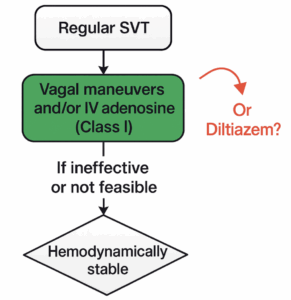Article by Veronica “Vee” Smith, MD
Case
It’s 11 o’clock in the morning on a sunny autumn day. Your radio alerts you about a mass casualty event and you are then dispatched to what turns out to be a school shooting. The estimated casualty count is over 20 with an unknown number of injured victims on the scene, their ages are estimated to range from 5-58 years of age. As your partner begins to drive light and sirens to the scene, several questions quickly race through your mind “Do I have enough tourniquets”, “Can I use a commercial tourniquet on a pediatric patient? And if so, is there an age cutoff?”. Before you know it you and your partner have arrived on the scene.
Introduction
Traumatic injuries are the leading cause of death among children and adolescents aged 1-17 years of age in the United States. Many of those deaths have been attributed to motor vehicle accidents, homicide, suicide and non-accidental trauma [1]. In 2020, penetrating trauma from firearm injuries became the leading cause of traumatic deaths in the pediatric population, surpassing deaths caused by motor vehicle accidents [1]. Traumatic brain injuries are the most common injury complex associated with death in children with traumatic injuries, followed by anoxia and hemorrhage [2]. Most deaths occur within the first 24 hours of the primary injury emphasizing the importance of interventions performed in the prehospital setting and the immediate hospital care in the emergency department [2]. Death due to hemorrhagic shock is more commonly associated with gunshot wounds with death occurring earlier in the first 24 hours in comparison to deaths from TBIs and anoxia [2]. As school shootings have continued to be on the rise in the US, there has been increased focus on hemorrhage control in the prehospital setting due to its significant morbidity and mortality. Data on tourniquet use in the pediatric population is currently sparse, much of the information that has been used to support the use of tourniquets in this population has been provided from research that has focused on the adult population or children injured in military war zones.
Literature Review
A study conducted at a combat support hospital in Iraq compared the outcomes of patients with hemorrhaging extremity injuries who had tourniquets applied in the prehospital setting vs tourniquet placement in the Emergency Department. Survival rates were higher in patients who received pre-hospital tourniquet placement [3]. The survival rate was also higher if the tourniquet was placed prior to the onset of shock, 90% of those patients survived their injuries in comparison to only 18% of those with tourniquets placed after the onset of shock [3]. Likewise, domestic studies involving tourniquet use in traumatic extremity injuries have shown similar results. A retrospective study at a level 1 trauma center in New Orleans examined commercial tourniquet use for penetrating extremity trauma over an 8-year period. Patients with a tourniquet were compared to those without. In comparison to the cohort without tourniquets, those who received tourniquets: required fewer blood transfusions, had higher systolic blood pressures (prehospital and on arrival to the ED), lower incidence of shock on arrival to the ED and shorter length of hospital stay [4]. In addition, the non-tourniquet cohort a higher incidence of fasciotomy and secondary amputation [4].
Many of the current commercial tourniquet styles have been used and tested in the military, with most of the use occurring in patients over the age of 18. For a tourniquet to function properly, it must be tightened to apply adequate circumferential pressure to halt blood flow distally. Some commercial tourniquets have a rigid mechanical system (i.e. windlass or ratchet) used to tighten the tourniquet onto an extremity; this can cause difficulty in fitting the tourniquet onto extremity circumferences that are smaller than the mechanism. Pediatric limb circumferences are smaller than that of an adult, which raises the question: Can enough circumferential pressure be applied to stop bleeding in small children?
A 2019 study examined the use of the Combat Application Tourniquet (CAT) in sixty children (aged 6-16 years) with a goal in determining whether the CAT would be able to apply enough pressure to occlude extremity arterial blood flow. The CAT was applied to an upper arm and thigh while peripheral pulses were monitored by Doppler. The number of windlass turns to occlude arterial blood flow were also recorded (maximum allowed was 3 turns (1080 degrees)). The CAT was found to have a 100% success rate in occluding arterial blood flow in the upper extremities tested [5]. In comparison the success rate in the lower extremity was 93% [5]. There was an increase in the number of windlass turns required to occlude blood flow as patients age and BMI increased [5]. Though this study provided demonstration that CATs could successfully be used in pediatric human subjects, the question of whether there is an age limit for successful use in commercial tourniquets remains. A 2020 study also examined the application of CATs to pediatric upper and lower extremities, this time examining children aged 2-7 years [6]. Although the sample size was smaller (24 extremities tested), the study found a 100% success rate in occluding arterial blood flow in both upper and lower extremities [6]. The smallest arm circumference and leg circumference included in the study were 13cm and 24.5cm respectively [6]. It may be possible that commercial tourniquets may be successful in children under the age of 2, but currently there has not been human subject research performed on this age group to provide that evidence.
Conclusion
High profile mass casualty events such as the Boston Marathon bombing have increased public interest in tourniquet use. With educational campaigns such as Stop the Bleed, commercial tourniquet use in the prehospital setting will likely increase and provide more information on tourniquet use and outcomes in the pediatric population. Although commercial tourniquets such as the CAT were designed for adult use particularly that of servicemen and servicewomen, at least two studies have shown that they can be successfully applied to pediatric patients aged 2-16 years [5,6]. The patients in these studies were volunteers with no extremity trauma, prehospital research could establish more efficacy of commercial tourniquet use in pediatric patients experiencing extremity trauma with exsanguinating hemorrhage. Despite limited research data the Pediatric Trauma Society supports (PTS) the usage of tourniquets in the prehospital setting during the resuscitation of pediatric patients with severe extremity trauma and hemorrhage [7]. In addition, PTS also supports the Stop The Bleed campaign, placing emphasis on prehospital hemorrhage control by use of direct pressure, wound packing with hemostatic gauze and tourniquet use.
References
Centers for Disease Control and Prevention. Web-based Injury Statistics Query and Reporting System. https://www.cdc.gov/injury/wisqars/index.html
Theodorou CM, Galganski LA, Jurkovich GJ, Farmer DL, Hirose S, Stephenson JT, Trappey AF. Causes of early mortality in pediatric trauma patients. J Trauma Acute Care Surg. 2021 Mar 1;90(3):574-581. doi: 10.1097/TA.0000000000003045. PMID: 33492107; PMCID: PMC8008945.
Kragh JF Jr, Littrel ML, Jones JA, Walters TJ, Baer DG, Wade CE, Holcomb JB. Battle casualty survival with emergency tourniquet use to stop limb bleeding. J Emerg Med. 2011 Dec;41(6):590-7. doi: 10.1016/j.jemermed.2009.07.022. Epub 2009 Aug 31. PMID: 19717268.
Smith AA, Ochoa JE, Wong S, Beatty S, Elder J, Guidry C, McGrew P, McGinness C, Duchesne J, Schroll R. Prehospital tourniquet use in penetrating extremity trauma: Decreased blood transfusions and limb complications. J Trauma Acute Care Surg. 2019 Jan;86(1):43-51. doi: 10.1097/TA.0000000000002095. PMID: 30358768.
Harcke HT, Lawrence LL, Gripp EW, Kecskemethy HH, Kruse RW, Murphy SG. Adult Tourniquet for Use in School-Age Emergencies. Pediatrics. 2019 Jun;143(6):e20183447. doi: 10.1542/peds.2018-3447. Epub 2019 May 7. PMID: 31064797.
Kelly JR, Levy MJ, Reyes J, Anders J. Effectiveness of the combat application tourniquet for arterial occlusion in young children. J Trauma Acute Care Surg. 2020 May;88(5):644-647. doi: 10.1097/TA.0000000000002594. PMID: 31977996.
Cunningham A, Auerbach M, Cicero M, Jafri M. Tourniquet usage in prehospital care and resuscitation of pediatric trauma patients-Pediatric Trauma Society position statement. J Trauma Acute Care Surg. 2018 Oct;85(4):665-667. doi: 10.1097/TA.0000000000001839. PMID: 29462083.
Website Editing and Layout by James Li, MD



